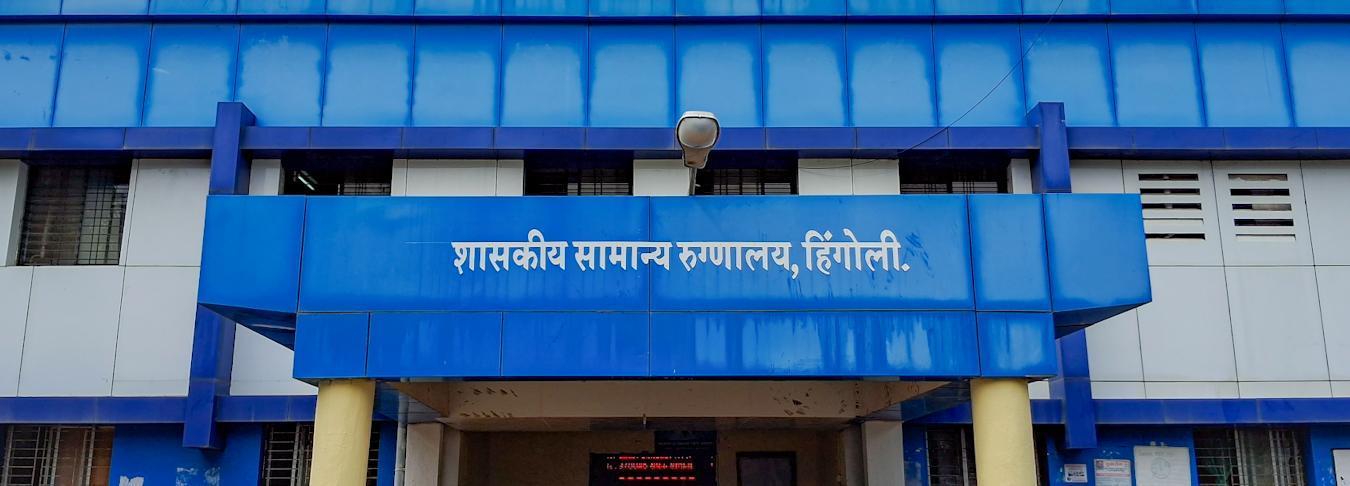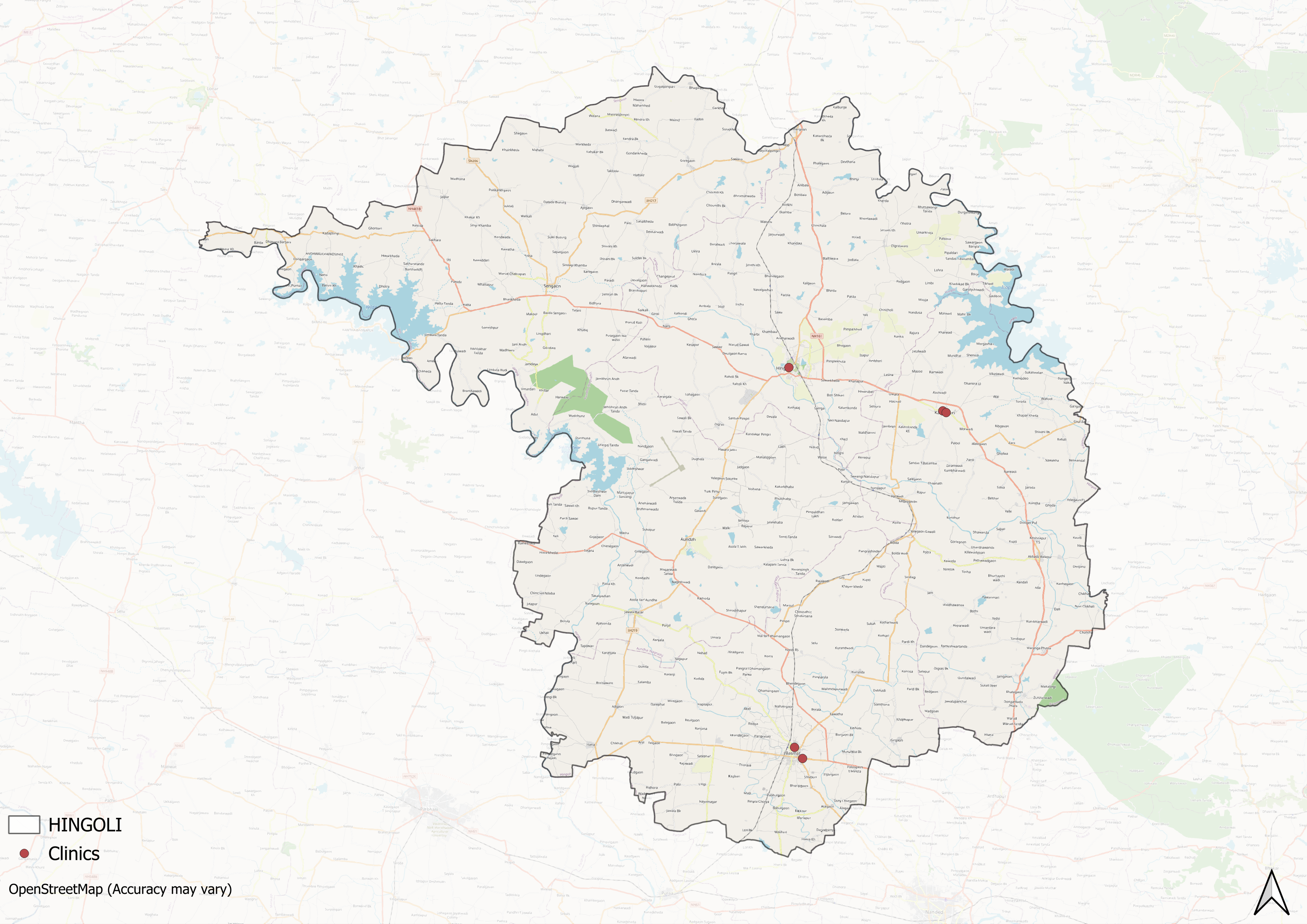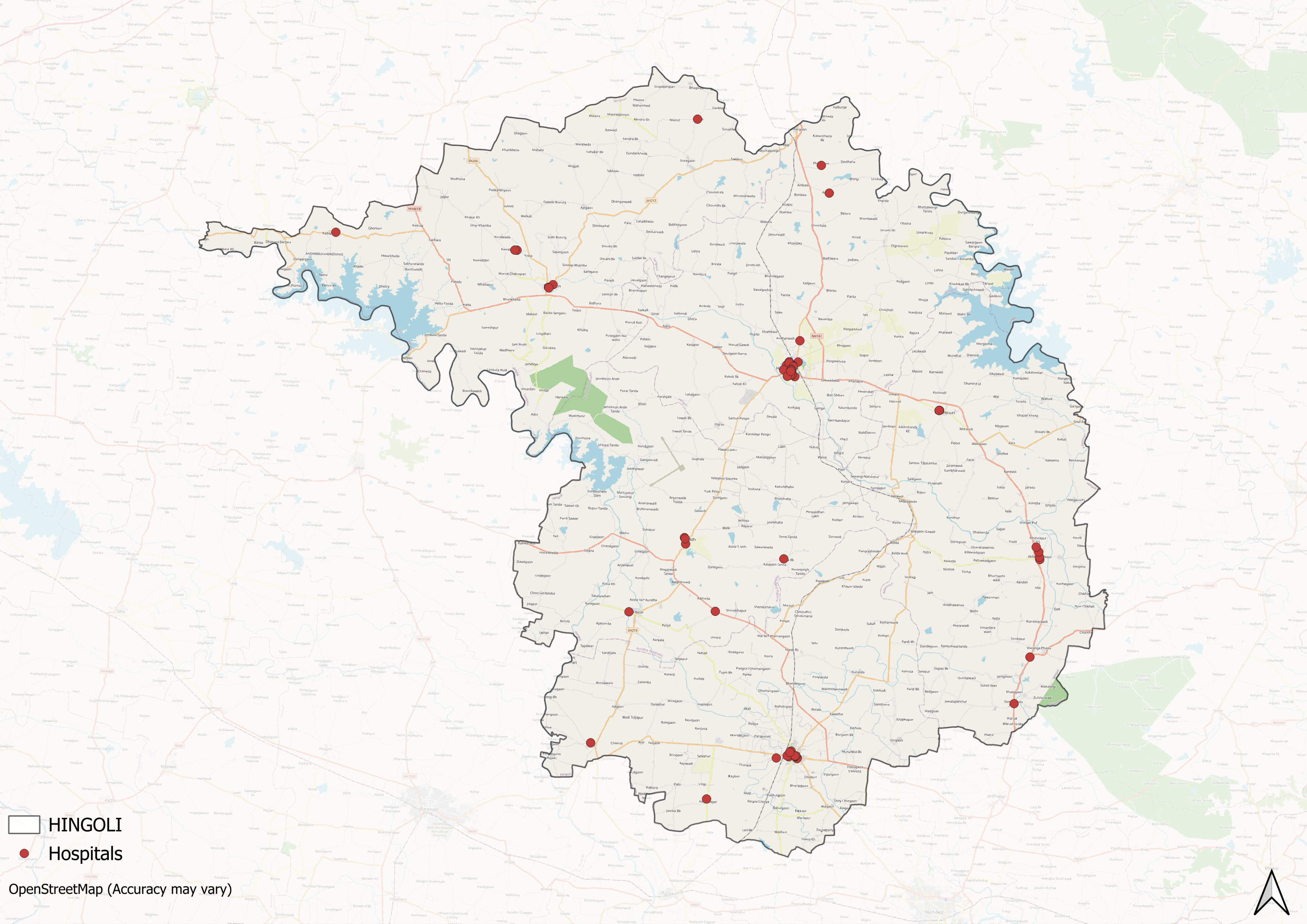Contents
- Healthcare Infrastructure
- Medical Education & Research
- Government Medical College
- Age-Old Practices & Remedies
- Graphs
- Healthcare Facilities and Services
- A. Public and Govt-Aided Medical Facilities
- B. Private Healthcare Facilities
- C. Approved vs Working Anganwadi
- D. Anganwadi Building Types
- E. Anganwadi Workers
- F. Patients in In-Patients Department
- G. Patients in Outpatients Department
- H. Outpatient-to-Inpatient Ratio
- I. Patients Treated in Public Facilities
- J. Operations Conducted
- K. Hysterectomies Performed
- L. Share of Households with Access to Health Amenities
- Morbidity and Mortality
- A. Reported Deaths
- B. Cause of Death
- C. Reported Child and Infant Deaths
- D. Reported Infant Deaths
- E. Select Causes of Infant Death
- F. Number of Children Diseased
- G. Population with High Blood Sugar
- H. Population with Very High Blood Sugar
- I. Population with Mildly Elevated Blood Pressure
- J. Population with Moderately or Severely High Hypertension
- K. Women Examined for Cancer
- L. Alcohol and Tobacco Consumption
- Maternal and Newborn Health
- A. Reported Deliveries
- B. Institutional Births: Public vs Private
- C. Home Births: Skilled vs Non-Skilled Attendants
- D. Live Birth Rate
- E. Still Birth Rate
- F. Maternal Deaths
- G. Registered Births
- H. C-section Deliveries: Public vs Private
- I. Institutional Deliveries through C-Section
- J. Deliveries through C-Section: Public vs Private Facilities
- K. Reported Abortions
- L. Medical Terminations of Pregnancy: Public vs Private
- M. MTPs in Public Institutions before and after 12 Weeks
- N. Average Out of Pocket Expenditure per Delivery in Public Health Facilities
- O. Registrations for Antenatal Care
- P. Antenatal Care Registrations Done in First Trimester
- Q. Iron Folic Acid Consumption Among Pregnant Women
- R. Access to Postnatal Care from Health Personnel Within 2 Days of Delivery
- S. Children Breastfed within One Hour of Birth
- T. Children (6-23 months) Receiving an Adequate Diet
- U. Sex Ratio at Birth
- V. Births Registered with Civil Authority
- W. Institutional Deliveries through C-section
- X. C-section Deliveries: Public vs Private
- Family Planning
- A. Population Using Family Planning Methods
- B. Usage Rate of Select Family Planning Methods
- C. Sterilizations Conducted (Public vs Private Facilities)
- D. Vasectomies
- E. Tubectomies
- F. Contraceptives Distributed
- G. IUD Insertions: Public vs Private
- H. Female Sterilization Rate
- I. Women’s Unmet Need for Family Planning
- J. Fertile Couples in Family Welfare Programs
- K. Family Welfare Centers
- L. Progress of Family Welfare Programs
- Immunization
- A. Vaccinations under the Maternal and Childcare Program
- B. Infants Given the Oral Polio Vaccine
- C. Infants Given the Bacillus Calmette Guerin (BCG) Vaccine
- D. Infants Given Hepatitis Vaccine (Birth Dose)
- E. Infants Given the Pentavalent Vaccines
- F. Infants Given the Measles or Measles Rubella Vaccines
- G. Infants Given the Rotavirus Vaccines
- H. Fully Immunized Children
- I. Adverse Effects of Immunization
- J. Percentage of Children Fully Immunized
- K. Vaccination Rate (Children Aged 12 to 23 months)
- L. Children Primarily Vaccinated in (Public vs Private Health Facilities)
- Nutrition
- A. Children with Nutritional Deficits or Excess
- B. Population Overweight or Obese
- C. Population with Low BMI
- D. Prevalence of Anaemia
- E. Moderately Anaemic Women
- F. Women with Severe Anaemia being Treated at an Institution
- G. Malnourishment Among Infants in Anganwadis
- Sources
HINGOLI
Health
Last updated on 26 July 2025. Help us improve the information on this page by clicking on suggest edits or writing to us.
Hingoli’s healthcare landscape, like many other regions across India, is shaped by a mix of indigenous and Western medical practices. For centuries, indigenous knowledge and treatments provided by practitioners such as hakims and vaidyas have formed the foundation of healthcare in the region. This long-standing relationship between communities and their natural environment played a key role in shaping the district’s early medical traditions. Over time, its landscape has gradually evolved with the introduction and expansion of more specialized medical services.
Healthcare Infrastructure
Much like other regions in India, Hingoli’s healthcare infrastructure follows a multi-tiered system that involves both public and private sectors. Currently, the public healthcare system is tiered into primary, secondary, and tertiary levels. Primary care is provided through Sub Centres and Primary Health Centres (PHCs), while secondary care is managed by Community Health Centres (CHCs) and Sub-District hospitals. Tertiary care, the highest level, includes Medical Colleges and District Hospitals. This system has been shaped and refined over time, influenced by national healthcare reforms.

Supporting this structure is a network of Accredited Social Health Activists (ASHAs) who, as described by the National Health Mission, serve as “an interface between the community and the public health system.” Over time, this multi-layered healthcare model has been continuously shaped and refined by national healthcare policies and reforms to improve universal health coverage across regions.
Hingoli’s formal healthcare infrastructure, like much of India, has its origins in the colonial era, which laid the groundwork for the system in place today. As Rama Baru explains in Missionaries in Medical Care (1999), “Allopathic medicine was introduced by the British in the mid-18th century, primarily to serve the needs of their civilian and military population.” Interestingly, during this time, Hingoli was part of the Nizam’s Hyderabad State and served as an important military base and cantonment area. The presence of the military in the district likely played a key role in the establishment of dispensaries throughout the region and many military and veterinary facilities were established to serve the needs of stationed troops.
Hingoli’s medical infrastructure remained limited for many decades. According to the 2001 Census, only 171 of the district’s 672 villages then had access to any form of medical facility. Over the years some change has taken place, The public health infrastructure began expanding. Additionally, in the 21st century, private hospitals started to emerge in the district; with their establishment being driven by trusts, NGOs, and locals themselves.


The district has seen the establishment of multispecialty and superspecialty facilities, particularly in Hingoli city. Among the notable additions is an Antiretroviral Therapy (ART) Centre, which provides dedicated care for individuals living with HIV/AIDS. Notably, Hingoli became the first district in Maharashtra to establish such a centre.
Medical Education & Research
Medical education and research are foundational to a district’s healthcare infrastructure. As Mathew Gerge aptly highlights, medical institutions often serve a “dual purpose,” which includes educating future healthcare professionals and providing healthcare services to the local population. When it comes to Hingoli, facilities dedicated to medical education appear to remain limited here, though recent developments mark important progress.
Government Medical College
Government Medical College, Hingoli is a government-run medical institution located in the Hingoli district of Maharashtra. Established in 2024, the college is affiliated with the Maharashtra University of Health Sciences (MUHS), Nashik, and is approved by the National Medical Commission (NMC). The institution offers an undergraduate MBBS program in the field of medicine.
Age-Old Practices & Remedies
Before the development of a formal three-tiered healthcare system, communities in Hingoli, like much of India, depended on indigenous knowledge and local remedies for their health needs. India has long been characterised by a pluralistic health tradition, where household treatments, folk beliefs, and local healers coexisted alongside emerging modern systems. District Gazetteers of Maharashtra also often record how superstition and ritual shaped local approaches to illness and recovery.
In Hingoli, older residents recall practices once used to treat snake bites, such as the पंडाल (Pandal) ritual, which sometimes had severe outcomes. Neem leaves were placed near patients as indicators of their condition. For common ailments, local remedies included applying a paste of split chickpeas and curd for chickenpox and using sugarcane to diagnose jaundice based on changes in colour. Illnesses were frequently attributed to curses or spirits and were managed through household methods or consultations with folk healers.
Graphs
Healthcare Facilities and Services
Morbidity and Mortality
Maternal and Newborn Health
Family Planning
Immunization
Nutrition
Sources
Census of India. 2001. District Census Handbook: Hingoli. Office of the Registrar General & Census Commissioner, India.https://censusindia.gov.in/nada/index.php/catalog/27797/download/30966/DH_27_2001_HIN.pdfhttps://censusindia.gov.in/nada/index.php/ca…
George, Mathew. 2023. "The Real Purpose of the Medical College." The Hindu.https://www.thehindu.com/opinion/op-ed/the-real-purpose-of-the-medical-college/article67232008.ecehttps://www.thehindu.com/opinion/op-ed/the-r…
https://pmc.ncbi.nlm.nih.gov/articles/PMC5144115/
M Choksi, B. Patil et al. 2016.Health systems in India.Vol 36 (Suppl 3).Journal of Perinatology.
Mohammed Akhef. 2021. "State’s First Dedicated Antiretroviral Therapy Centre in Hingoli." The Times of India, India.https://timesofindia.indiatimes.com/city/aurangabad/states-first-dedicated-antiretroviral-therapy-centre-in-hingoli/articleshow/84389711.cmshttps://timesofindia.indiatimes.com/city/aur…
National Health Mission (NHM). n.d. "About Accredited Social Health Activist (ASHA)." National Health Mission, India.https://nhm.gov.in/index1.php?lang=1&level=1&sublinkid=150&lid=226#:~:text=One%20of%20the%20key%20components,performing%20her%20spelled%20out%20roles.https://nhm.gov.in/index1.php?lang=1&level=1…
Last updated on 26 July 2025. Help us improve the information on this page by clicking on suggest edits or writing to us.